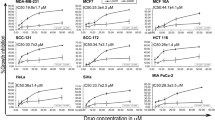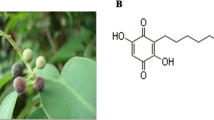Abstract
In this study, we investigated the synergistic effect of l-buthionine sulfoximine (BSO) on the chlorin e6 (Ce6)-based photodynamic therapy (PDT) of cancer cells. Among various cancer cells, HCT116 cells have highest intracellular L-glutathione (GSH) level and SNU478 cells showed the lowest GSH level. BSO alone showed negligible intrinsic cytotoxicity against CCD986sk cells. Since HCT116 and SNU478 cells showed the highest and the lowest intracellular GSH levels, respectively, those were used to test synergistic effect on the Ce6-based PDT. In the absence of light, BSO and Ce6 combination did not practically increase reactive oxygen species (ROS) in either of HCT116 or SNU478 cells, while light irradiation increased ROS level dose-dependently. 10 μM BSO treatment significantly depleted total GSH level in cancer cells, i.e. total GSH level decreased to one-fourth of the control in HCT116 cells while it decreased to two-fifth of the control treatment at SNU478 cell. BSO showed synergistic effect on the ROS production in HCT116 cells while it has practically no benefits in ROS production of SNU478 cells. No synergistic effect was observed in viability of SNU478 cells because BSO itself was cytotoxic to SNU478 cells. However, BSO had negligible cytotoxicity against HCT116 cells and showed synergistic anticancer effect in combination with Ce6-based PDT. Furthermore, the addition of glutathione reduced ethyl ester (GSH-OEt), recovered intracellular GSH level, and cell viability with reduced the intracellular ROS level. We suggest that synergistic effect of BSO in the Ce6-based PDT should be considered with intrinsic intracellular GSH level of cancer cells.








Similar content being viewed by others
References
Allalunis-Turner MJ, Lee FY, Siemann DW (1988) Comparison of glutathione levels in rodent and human tumor cells grown in vitro and in vivo. Cancer Res 48:3657–3660
Anderson CP, Tsai J, Chan W, Park CK, Tian L, Lui RM, Forman HJ, Reynolds CP (1997) Buthionine sulphoximine alone and in combination with melphalan (L-PAM) is highly cytotoxic for human neuroblastoma cell lines. Eur J Cancer 33:2016–2019
Bailey HH, Mulcahy RT, Tutsch KD, Arzoomanian RZ, Alberti D, Tombes MB, Wilding G, Pomplun M, Spriggs DR (1994) Phase I clinical trial of intravenous l-buthionine sulfoximine and melphalan: an attempt at modulation of glutathione. J Clin Oncol 12:194–205
Chu CW, Ryu JH, Jeong YI, Kwak TW, Lee HL, Kim HY, Son GM, Kim HW, Kang DH (2016) Redox-responsive nanophotosensitizer composed of chlorin-e6-conjugated dextran for photodynamic treatment of colon cancer cells. J Nanomater. https://doi.org/10.1155/2016/4075803
Dickinson DA, Forman HJ (2002) Cellular glutathione and thiols metabolism. Biochem Pharmacol 64:1019–1026
Dolmans DE, Fukumura D, Jain RK (2003) Photodynamic therapy for cancer. Nat Rev Cancer 3:380–387
Jiang F, Robin AM, Katakowski M, Tong L, Espiritu M, Singh G, Chopp M (2003) Photodynamic therapy with photofrin in combination with buthionine sulfoximine (BSO) of human glioma in the nude rat. Lasers Med Sci 18:128–133
Juarranz A, Jaén P, Sanz-Rodríguez F, Cuevas J, González S (2008) Photodynamic therapy of cancer. Basic principles and applications. Clin Transl Oncol 10:148–154
Kawczyk-Krupka A, Bugaj AM, Latos W, Zaremba K, Wawrzyniec K, Sieroń A (2015) Photodynamic therapy in colorectal cancer treatment: the state of the art in clinical trials. Photodiagnosis Photodyn Ther 12:545–553
Kiesslich T, Plaetzer K, Oberdanner CB, Berlanda J, Obermair FJ, Krammer B (2005) Differential effects of glucose deprivation on the cellular sensitivity towards photodynamic treatment-based production of reactive oxygen species and apoptosis-induction. FEBS Lett 579:185–190
Kimani SG, Phillips JB, Bruce JI, MacRobert AJ, Golding JP (2012) Antioxidant inhibitors potentiate the cytotoxicity of photodynamic therapy. Photochem Photobiol 88:175–187
Knoll N, Ruhe C, Veeriah S, Sauer J, Glei M, Gallagher EP, Pool-Zobel BL (2005) Genotoxicity of 4-hydroxy-2-nonenal in human colon tumor cells is associated with cellular levels of glutathione and the modulation of glutathione S-transferase A4 expression by butyrate. Toxicol Sci 86:27–35
Lee HM, Chung CW, Kim CH, Kim DH, Kwak TW, Jeong YI, Kang DH (2014) Defensive mechanism in cholangiocarcinoma cells against oxidative stress induced by chlorin e6-based photodynamic therapy. Drug Des Dev Ther 8:1451–1462
Liaudat AC, Bohl LP, Tolosa de Talamoni NG, Maletto B, Pistoresi-Palencia MC, Picotto G (2014) Oxidative stress, cell cycle arrest and differentiation contribute toward the antiproliferative action of BSO and calcitriol on Caco-2 cells. Anticancer Drugs 25:810–818
Ma YC, Wang JX, Tao W, Sun CY, Wang YC, Li DD, Fan F, Qian HS, Yang XZ (2015) Redox-responsive polyphosphoester-based micellar nanomedicines for overriding chemoresistance in breast cancer cells. ACS Appl Mater Interfaces 7:26315–26325
Nishizawa S, Araki H, Ishikawa Y, Kitazawa S, Hata A, Soga T, Hara T (2018) Low tumor glutathione level as a sensitivity marker for glutamate-cysteine ligase inhibitors. Oncol Lett 15:8735–8743
Patlevič P, Vašková J, Švorc P Jr, Vaško L, Švorc P (2016) Reactive oxygen species and antioxidant defense in human gastrointestinal diseases. Integr Med Res 5:250–258
Pompella A, Visvikis A, Paolicchi A, De Tata V, Casini AF (2003) The changing faces of glutathione, a cellular protagonist. Biochem Pharmacol 66:1499–1503
Romero-Canelón I, Mos M, Sadler PJ (2015) Enhancement of selectivity of an organometallic anticancer agent by redox modulation. J Med Chem 58:7874–7880
Sies H (1999) Glutathione and its role in cellular functions. Free Radic Biol Med 27:916–921
Theodossiou TA, Olsen CE, Jonsson M, Kubin A, Hothersall JS, Berg K (2017) The diverse roles of glutathione-associated cell resistance against hypericin photodynamic therapy. Redox Biol 12:191–197
Verhille M, Couleaud P, Vanderesse R, Brault D, Barberi-Heyob M, Frochot C (2010) Modulation of photosensitization processes for an improved targeted photodynamic therapy. Curr Med Chem 17:3925–3943
You BR, Park WH (2012) Arsenic trioxide induces human pulmonary fibroblast cell death via increasing ROS levels and GSH depletion. Oncol Rep 28:749–757
Zeevalk GD, Manzino L, Sonsalla PK, Bernard LP (2007) Characterization of intracellular elevation of glutathione (GSH) with glutathione monoethyl ester and GSH in brain and neuronal cultures: relevance to Parkinson’s disease. Exp Neurol 203:512–520
Acknowledgements
This work was supported by Research Institute for Convergence of Biomedical Science and technology, Pusan National University Yangsan Hospital (30-2018-011).
Author information
Authors and Affiliations
Corresponding authors
Ethics declarations
Conflict of interest
Authors declared no potential conflict of interest.
Additional information
Publisher's Note
Springer Nature remains neutral with regard to jurisdictional claims in published maps and institutional affiliations.
Electronic supplementary material
Below is the link to the electronic supplementary material.
Rights and permissions
About this article
Cite this article
Lee, H.M., Kim, D.H., Lee, H.L. et al. Synergistic effect of buthionine sulfoximine on the chlorin e6-based photodynamic treatment of cancer cells. Arch. Pharm. Res. 42, 990–999 (2019). https://doi.org/10.1007/s12272-019-01179-0
Received:
Accepted:
Published:
Issue Date:
DOI: https://doi.org/10.1007/s12272-019-01179-0




